Fundamental to science is measurement. It is a way of objectively assessing something, anything, even the state of a coral reef, even of an individual coral. Historically coral growth rates were measured by coring the really old massive Porites.
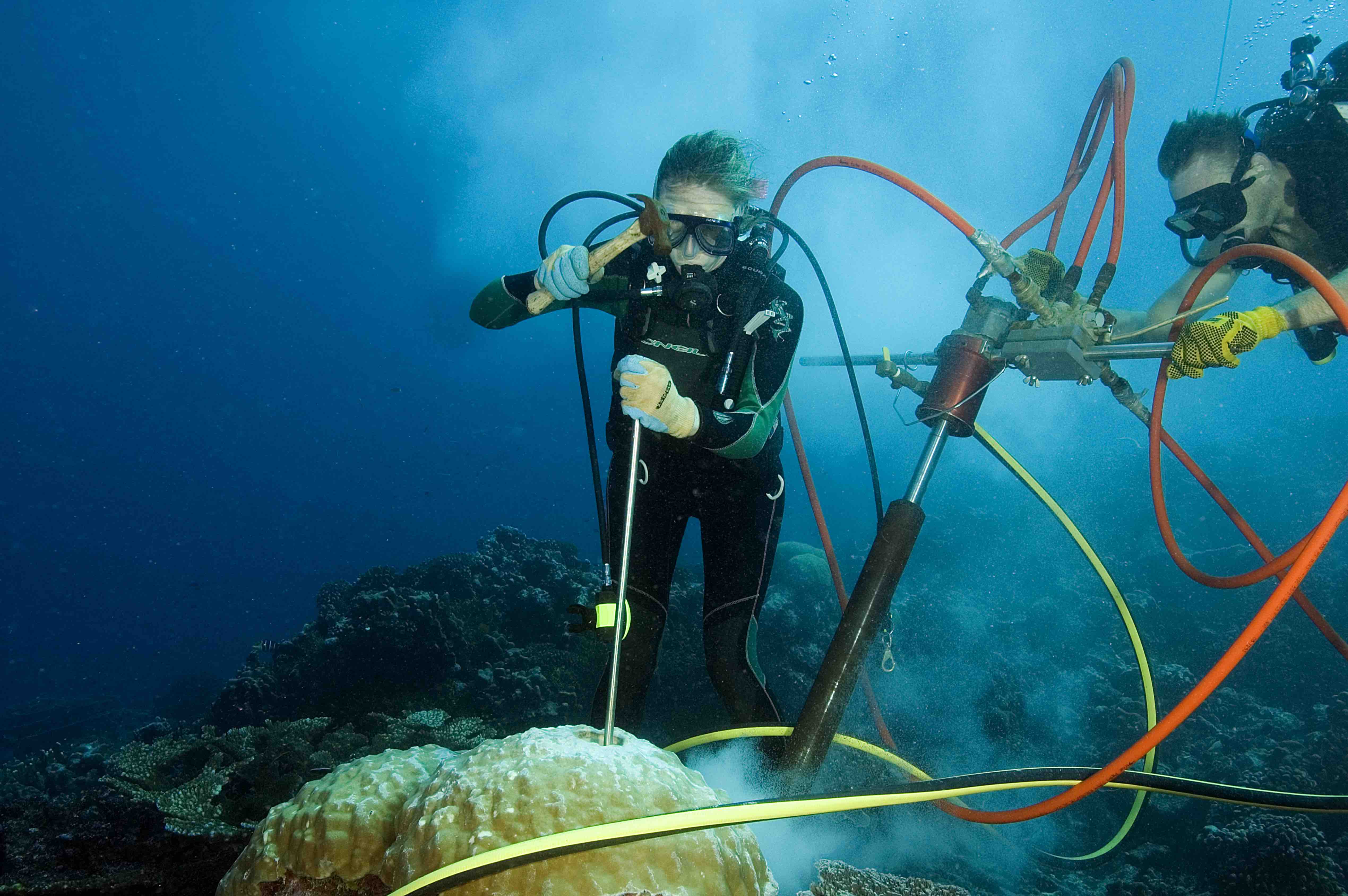
Like tree rings in temperate forests, the massive old Porites can be cored to see the banding and from this it is possible to calculate coral calcification rates which are a measure of the growth rate of individual corals.
Peter Ridd has been asking for some quality assurance of so many of the measurements relating to Great Barrier Reef health, including coral growth rates. Key Australian institutions have responded by stonewalling, and in the case of James Cook University, actually sacking him. After two rounds in the federal courts his appeal against his dismissal is finally going to the High Court of Australia, with the next hearing probably in February 2021. While the lawyers are preoccupied with Peter’s rights, or otherwise, to academic freedom and freedom of speech, my concern is whether Peter is actually telling the truth when he says that the Great Barrier Reef is resilient and definitely not dying from coral bleaching, though there is a problem with the integrity of the science.
Most media reports, based on extensive aerial surveys by his one-time colleague Terry Hughes, conclude that the reef is variously 50% or 60% dead from coral bleaching as a direct consequence of global warming.
These media reports do not consider coral growth rates, but rather the area of coral that Professor Hughes has measured to be bleached, with an inference being that this will all die.
Terry Hughes and Peter Ridd can’t both be right.
How can they have come to such different conclusions regarding the health of the Great Barrier Reef? Is the reef really half dead, or not?
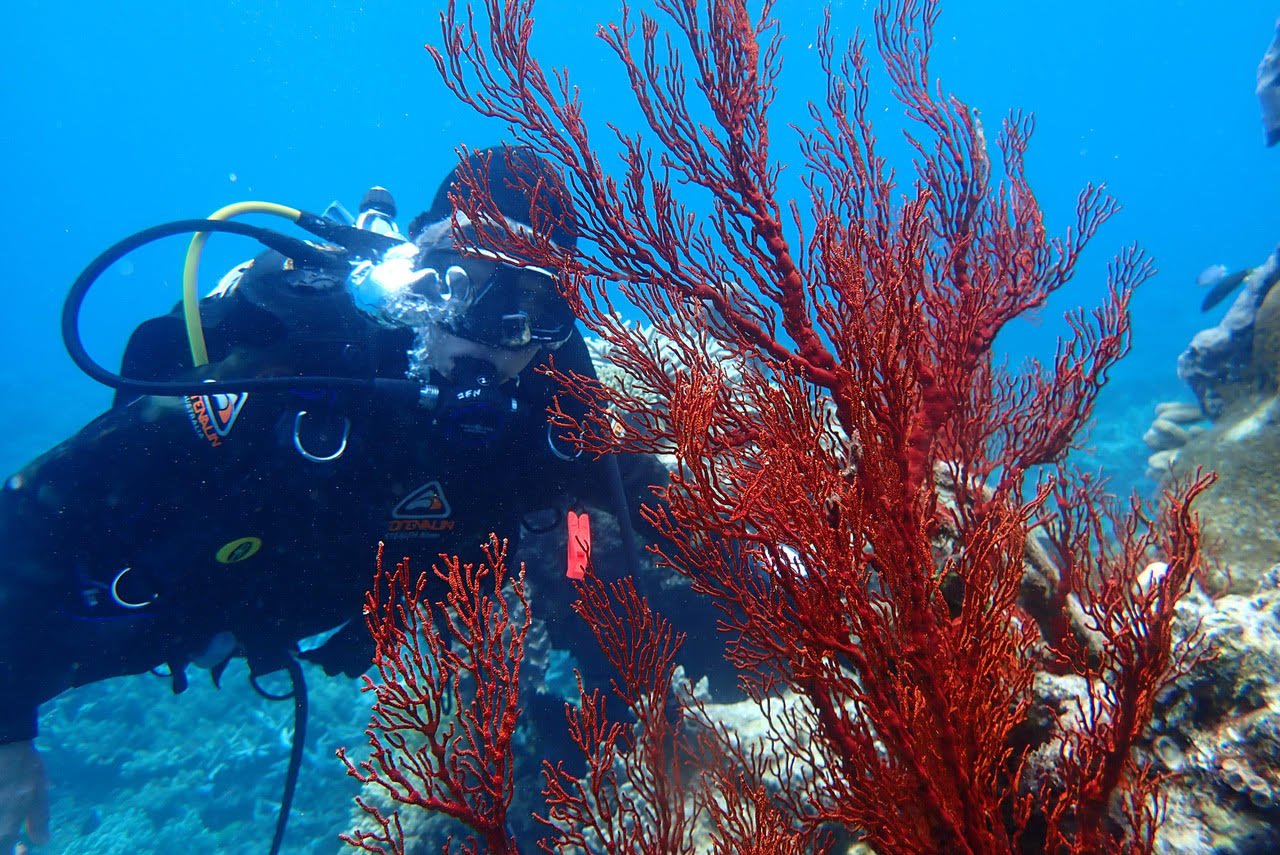
My working hypothesis is that Terry Hughes’ claims the reef is half dead, are not objective because there is a flaw with his particular survey method. This method is detailed in the technical literature, specifically his paper in Ecology published in 2018 entitled ‘Large-scale bleaching of corals on the Great Barrier Reef’.
Science is not a truth. It is a way of getting to the truth via some method or other that often involves measurement. Sometimes scientists get the method wrong, and so they come up with answers that are also wrong. Sometimes the wrong answer pleases because it is politically correct.
Could it be that in surveying by looking out the window of an aeroplane at such a high altitude (150 metres), and then ground truthing only with respect to a particular reef habitat-type known as the ‘reef crescent’, Professor Hughes has inadvertently recorded a wrong answer? Could he be avoiding, even in denial, when it comes to all the corals in the reef lagoon?
Marine scientists, and anyone with experience diving coral reefs, knows that there are distinct ecological zones at coral reefs. The reef crest, as the name suggests, is the highest part with corals in this habitat often exposed at low tides, sometimes rained-on, and during storms and cyclones this is the part of the reef that will be most likely smashed by big waves. Not surprisingly this habitat/area of a coral reef may be totally devoid of live coral or the coral may be more stunted, and sparse. At the same reef there may be healthy corals in the lagoon and back reef to the leeward side of the crest, and also corals growing down the front slope, even around the perimeter of the crest if it is a flat-topped platform. So, in only surveying the crest, the scientist/Terry Hughes could come away with the impression the reef is dead, when it is actually teeming with life – just not at the reef crest.
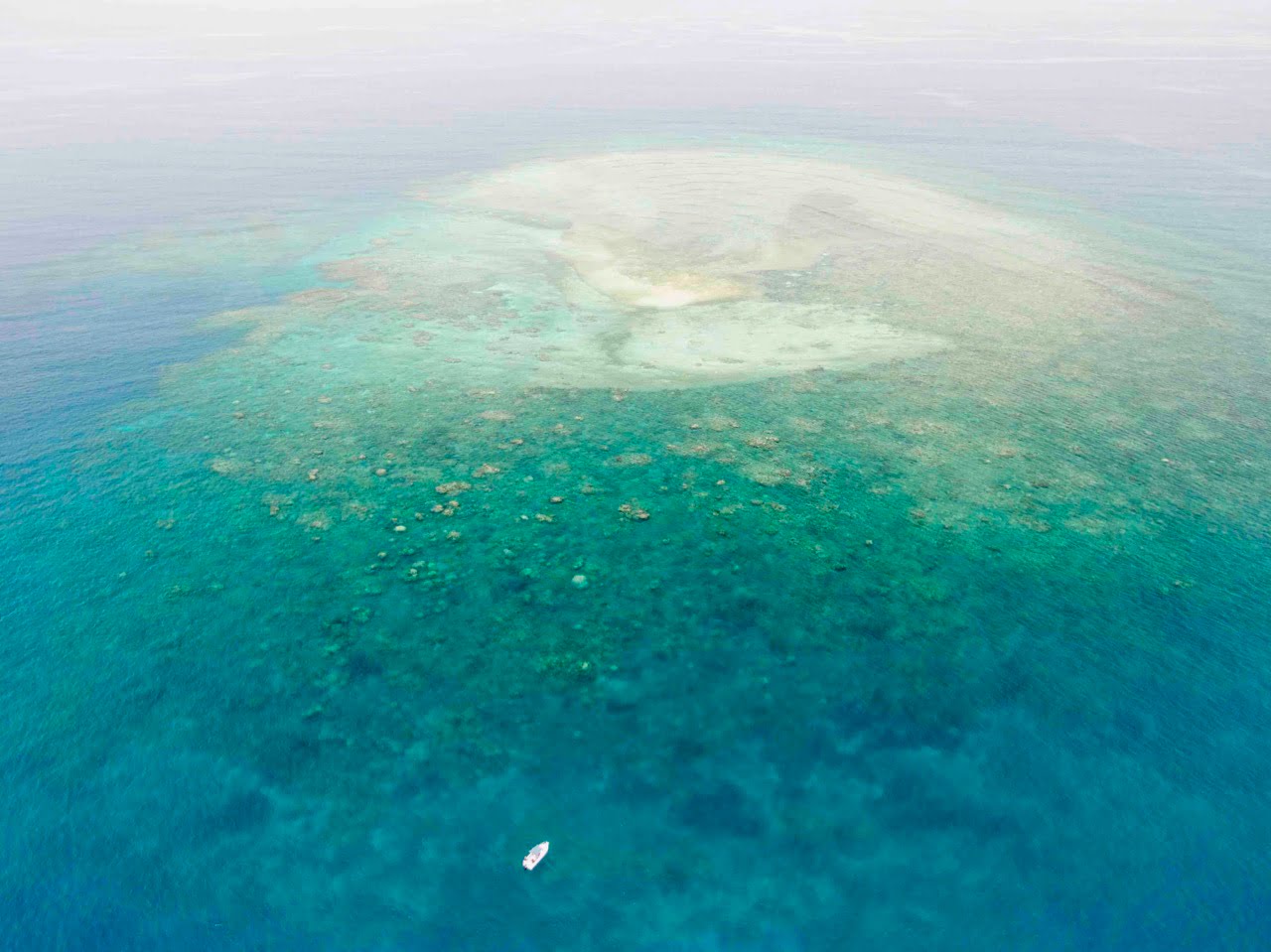
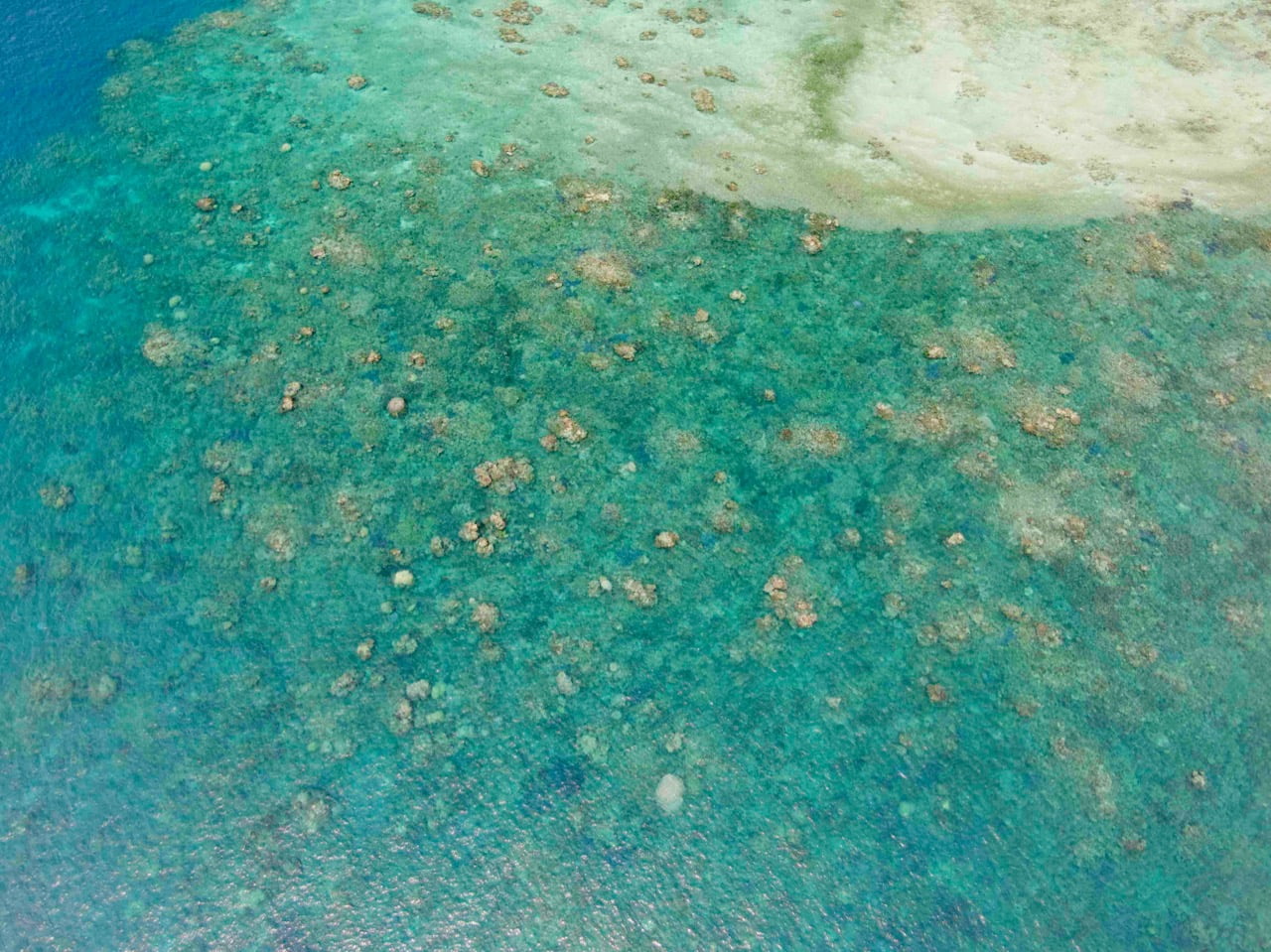
Professor Hughes specifically states in his 2018 article that underwater surveys were conducted to assess the accuracy of aerial surveys using five 10 x 1m belt transects placed on the reef crest. There is no suggestion that he distinguished between the different reef habitats. He only surveys the reef crest. He surveyed the area that probably had the ‘worst’ and ‘least’ coral.
I tested my hypothesis that Professor Hughes’s methodology is flawed at Pixie Reef just two days ago (25th November). We put my drone Skido into the air and took photographs at 5, 10, 20, 40, 100 and 120 metres of altitude at the reef crest, reef lagoon and reef front slope. Following are photographs just at 5 and 120 metres and just from the crest and lagoon at Pixie Reef. (If I can get a large collection of these type of photographs together from different reefs, they could form the basis of a note for publication about measurement and the importance of measuring different habitat types at the same reef if the idea is to understand the health of the entire reef ecosystem, not just the reef crest.)
A photograph taken at 120 metres altitude of the reef crest is quite different from a photograph of the reef lagoon taken at exactly the same altitude. At 120 metres altitude parts of the reef crest looks rather barren, perhaps bleached. Hughes has mostly concluded that the Great Barrier Reef is 60% bleached from 150 metres looking out a plane window at the reef crest.
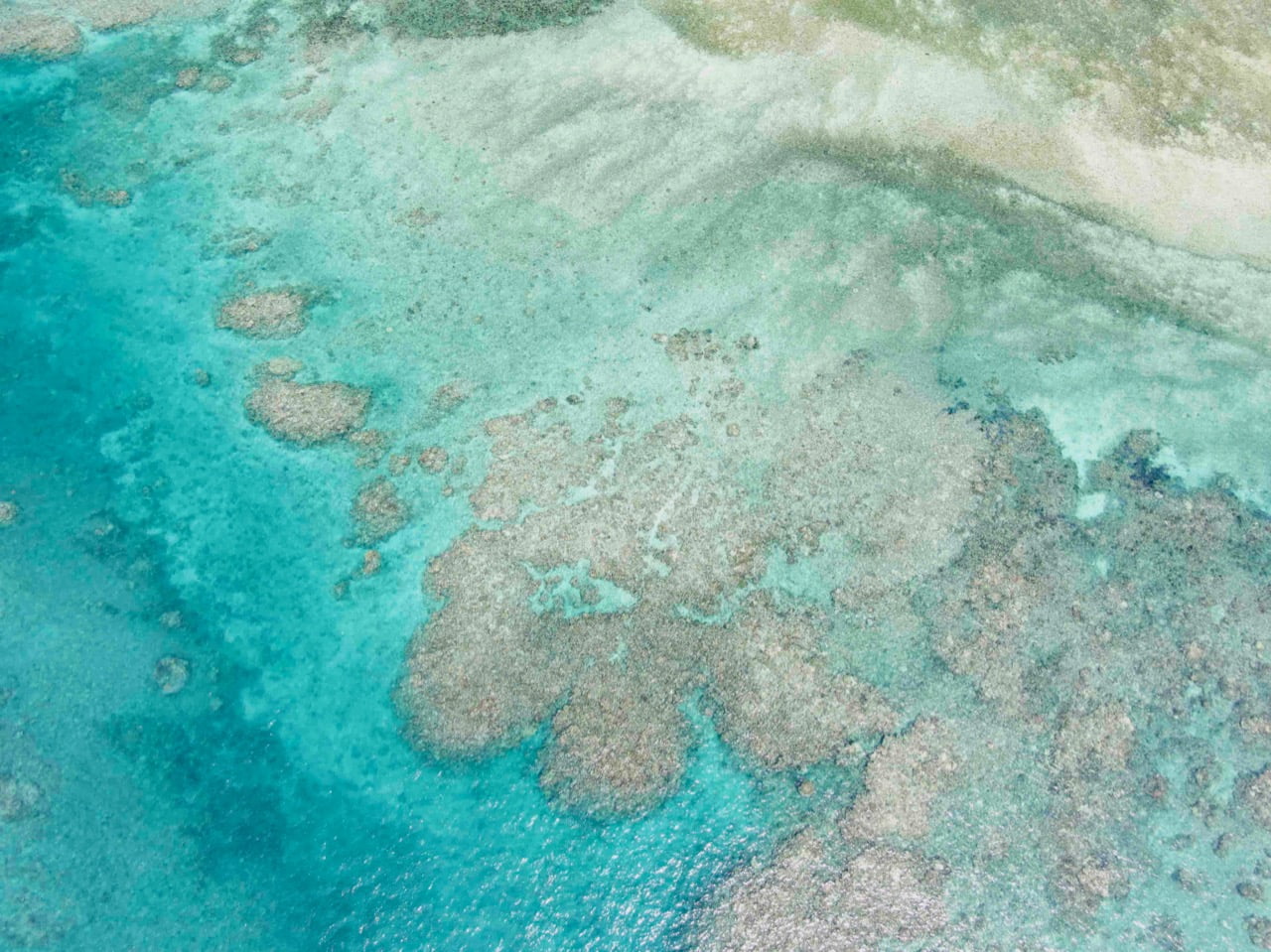
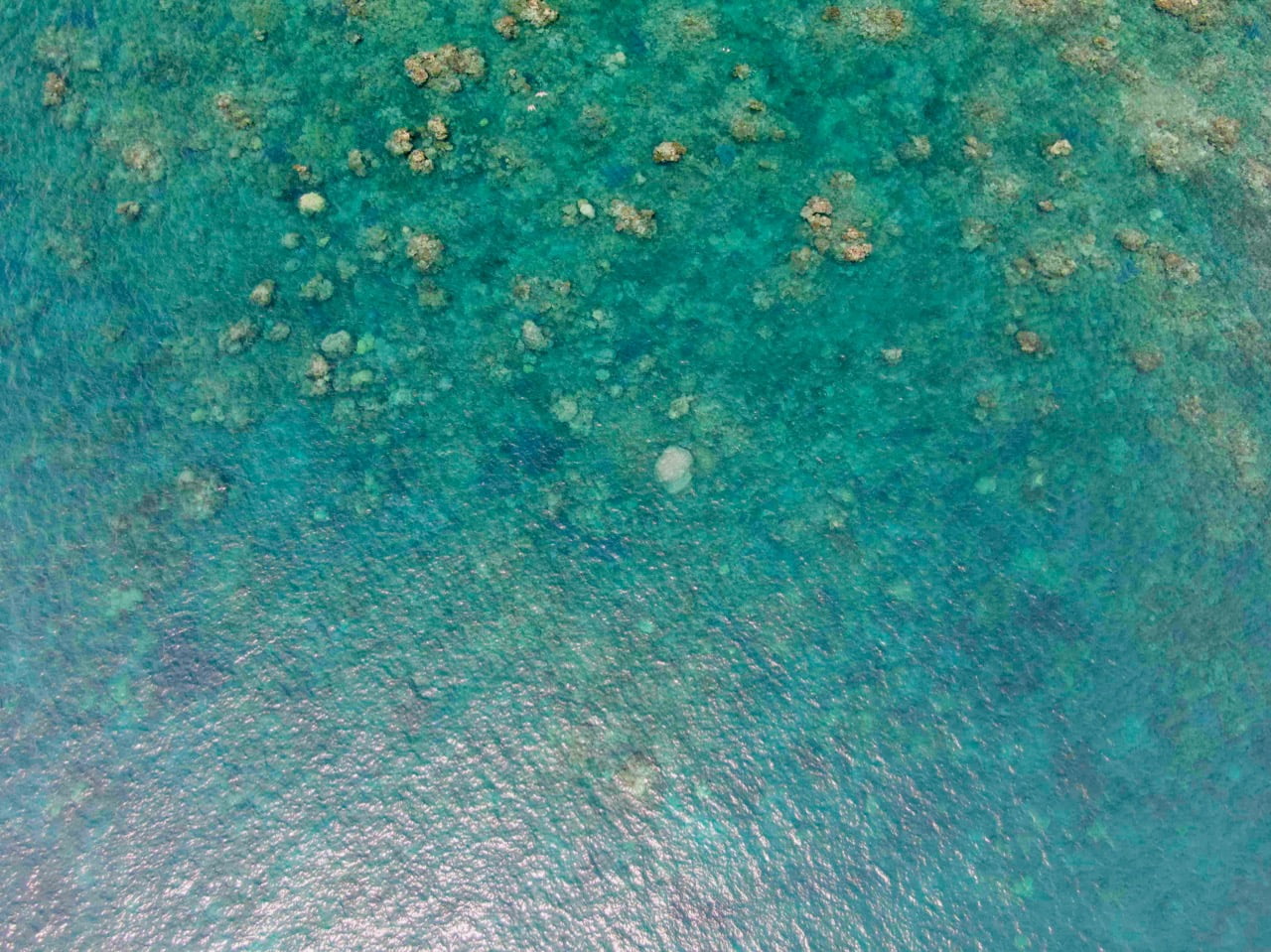
The rather large circular boulders in the lagoon photograph from 120 metres up are massive Porites corals. The type of coral that Peter Ridd would like AIMS to core, so we had an objective measure of coral growth rates back 100s of years.
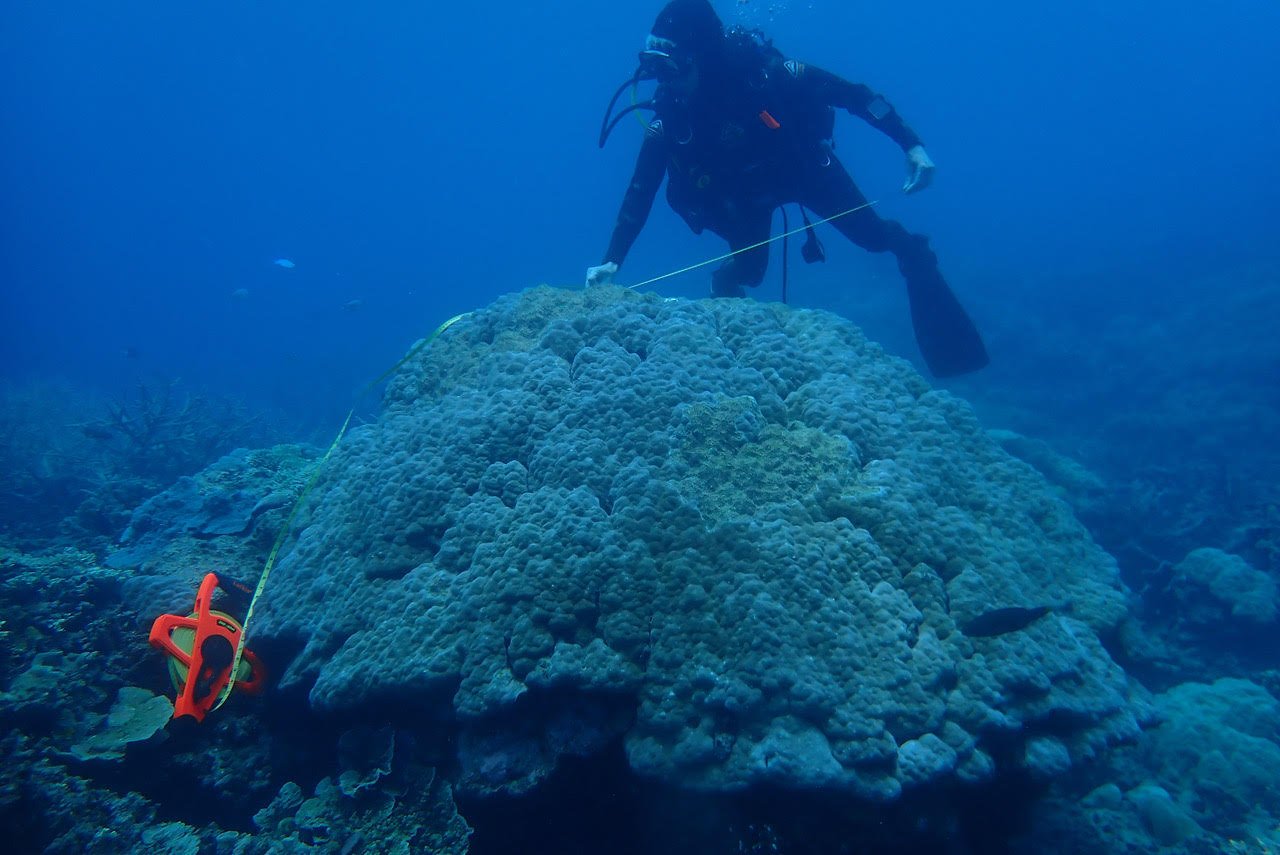
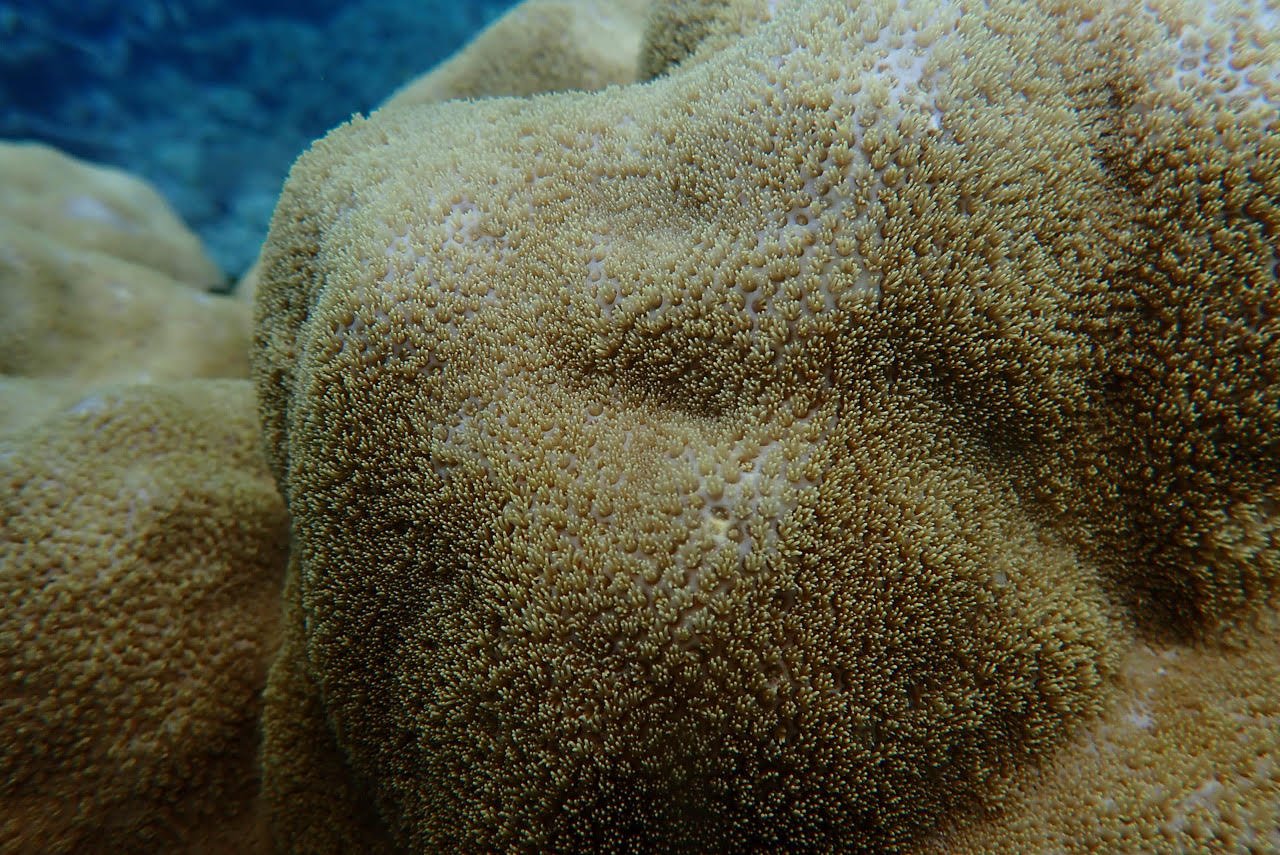
The photograph of the reef crest from 120 metres altitude was taken with the drone (Skido of course) lifted vertically from 5 metres to 120 metres. This is what the same reef looked like at just 5 metres above the crest. There are live corals but no massive Porites or even red Gorgonians, though both exist at Pixie reef but would have been excluded from a 10 metre belt transect across the reef crest and from an aerial survey of the crest, because they exist in a different habitat type.
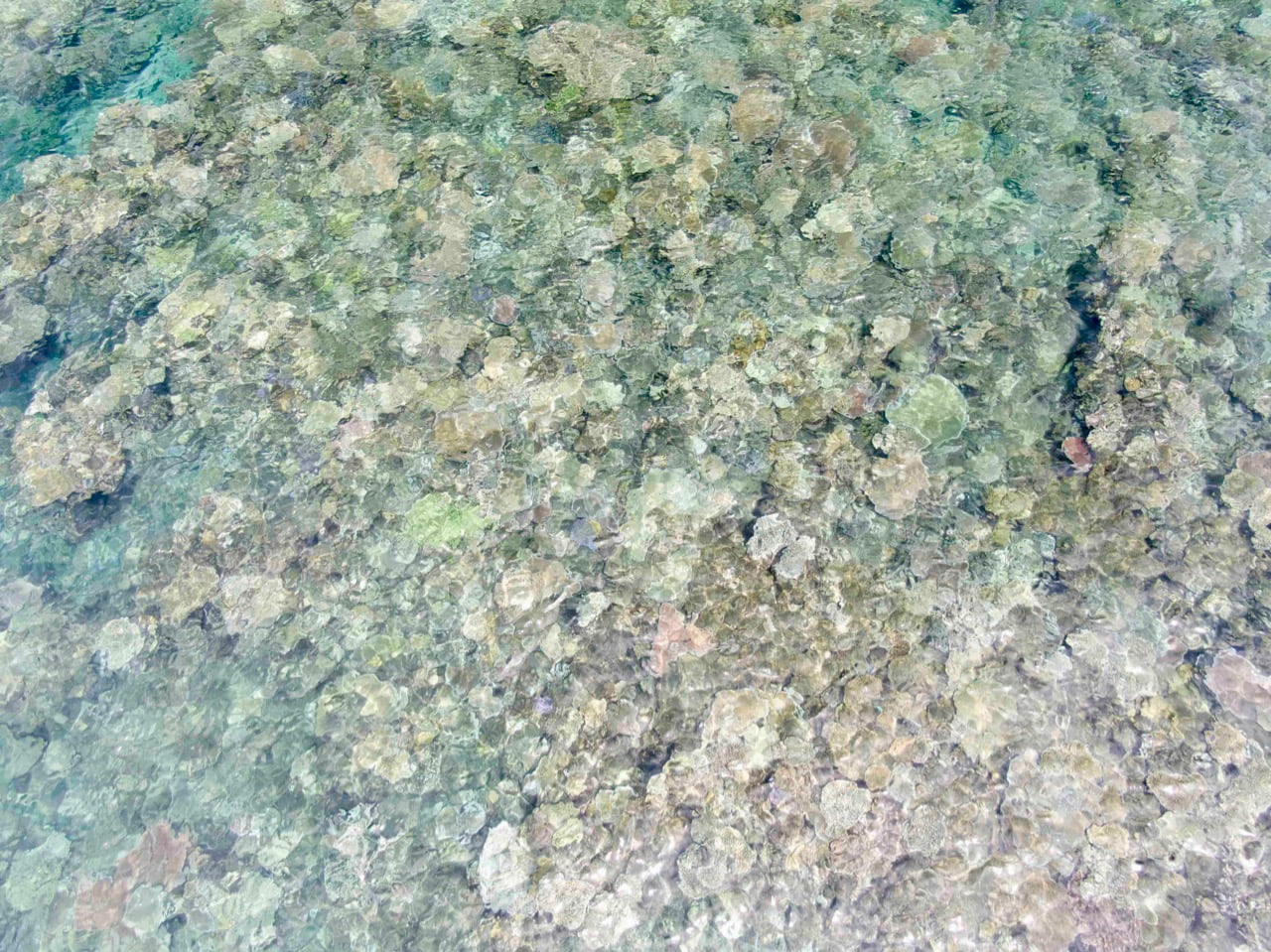
A photograph taken at 5 metres from above a section of reef lagoon shows plate corals, presenting as toadstools when photographed from under-the-water, which seems most appropriate given this is Pixie reef. I didn’t find any pixies though.
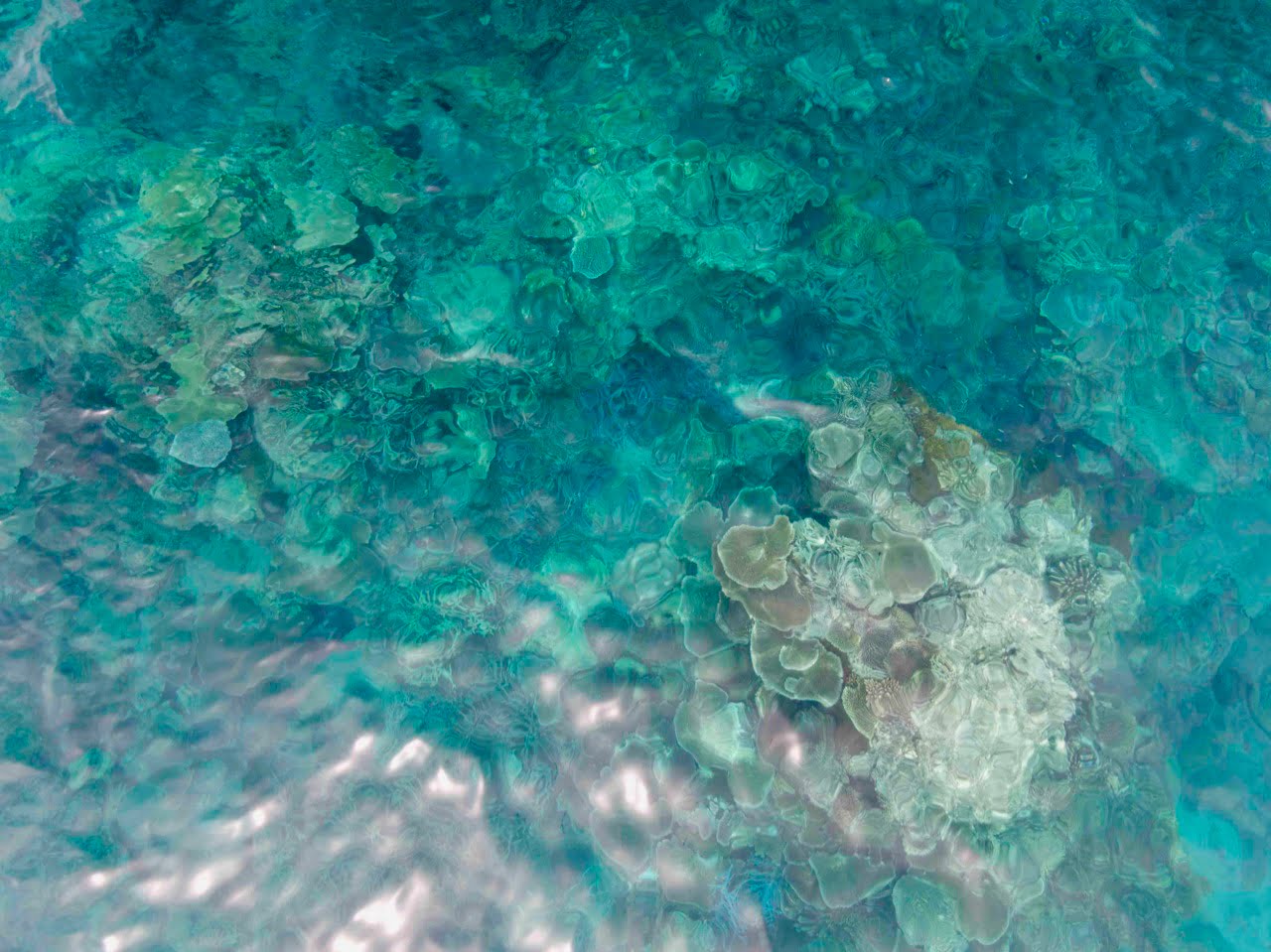

So much thanks to Stuart Ireland for taking me to Pixie Reef, and for taking all the photographs under-the-water, and he also flew Skido. All the photographs (except the shutterstock of the coring), were taken at Pixie reef on 25th November 2020. Pixie reef is just to the north east of Cairns in Far North Queensland.
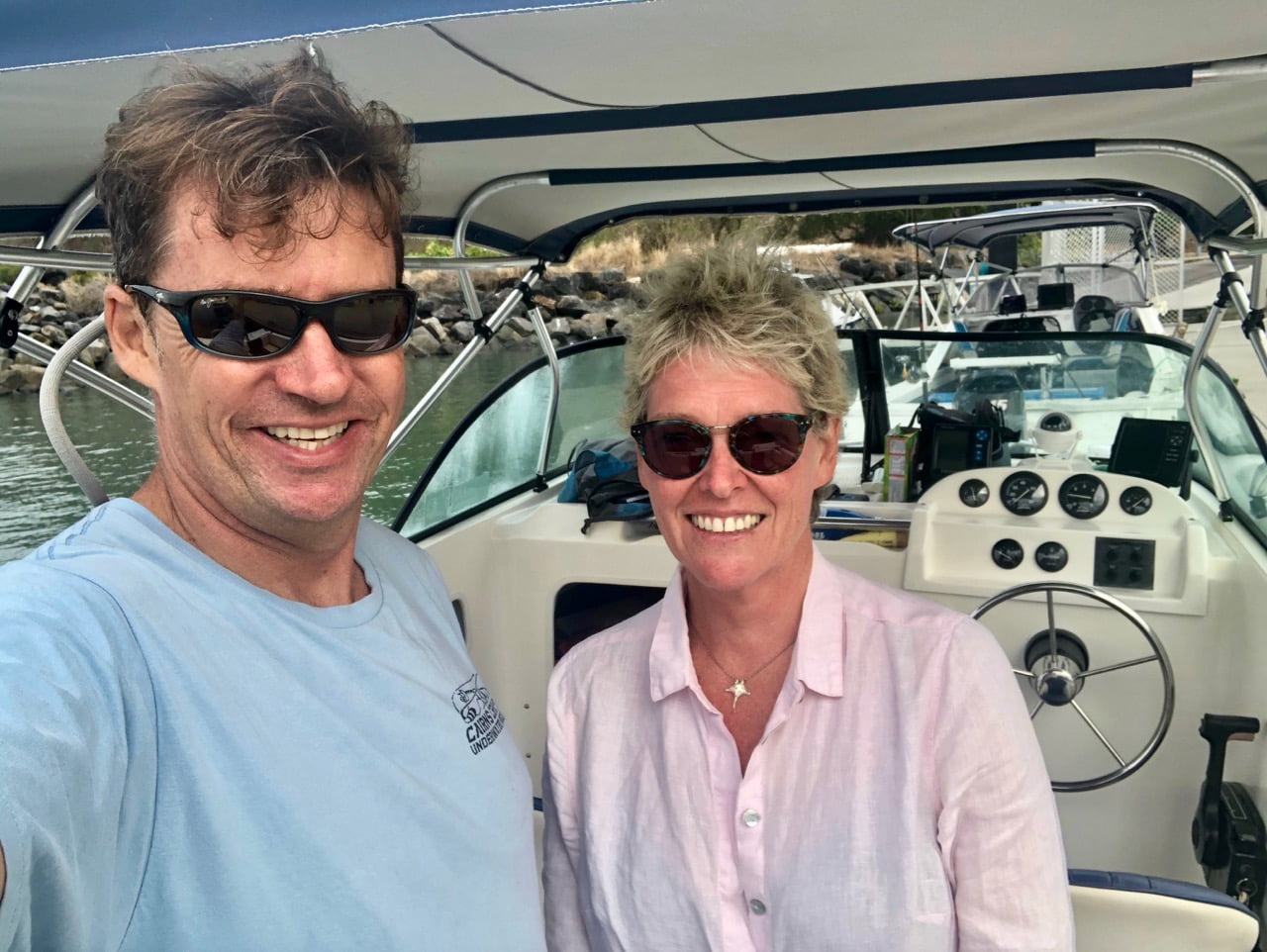
****
The image at the very top of this blog post is of me/Jen swimming over the top of a 7 metre wide Porites at Pixie Reef on 25th November 2020. This is the type and size of coral that Peter Ridd would like to think was still being cored by the Australian Institute of Marine Science (AIMS), as an objective measure of coral growth rates. AIMS used to core these old corals, to get an idea of climate change back hundreds of years. This coral could be more than 400 years old, with annual bands that can be measured at the scale of one year, year on year perhaps back 300 or 400 years to calculate an annual growth rate. So, from the one coral we could (if they cored it) see if growth rates have increased or decreased year on year, or not.

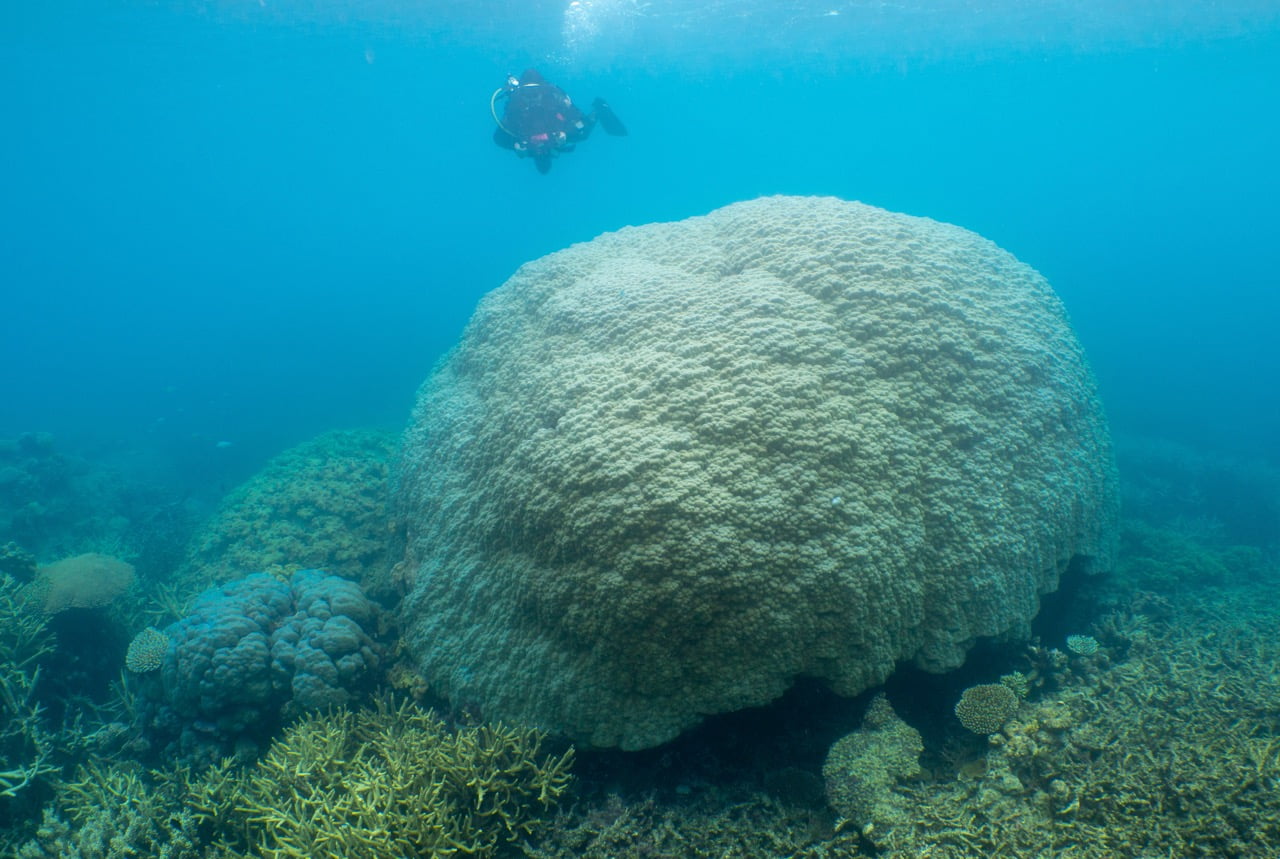
 Jennifer Marohasy BSc PhD is a critical thinker with expertise in the scientific method.
Jennifer Marohasy BSc PhD is a critical thinker with expertise in the scientific method.

The accurate answer lies in core sampling. AIMS stopped measuring (for whatever reason I don’t know). I say, “Someone else needs to start measuring again if AIMS (presently) has zero interest in the relevance of the ongoing data analysis on the behalf of the curious AU public (taxpayer?) knowledge base. Fortunately the massive oldest corals remain intact… they have not been destroyed to smithereens. The question becomes : Who will have the delightful pleasure of being the very first set of eyes to assess the latest ringed layers of coral core sample/s?”
Thanks Jen for good science. Yes it’s all about measurement !
And quality control as Peter Ridd reminds us.
And as for hot shot Terry Hughes,
It seems he does know one end of a measuring tape from another.
But his methodology is good for getting lots of media attention and funding.
Good work Jennifer. Keep up the pressure on AIMS to core the porites and publish a report on the findings…..best wishes
Although nowhere near your plateau of expertise, Jen, I find the most annoying part of the media hype is the fact there is no mention that most reefs are a long way from the mainland. As an example, take Britamart 90 klms out from Dunginess. The water depth is a fairly constant 50 metres over that 90 klms, except for the sonar evidence of hundreds of deep water reefs rising 3 to 4 metres from the floor. Britamart is a very large and popular fishing area. At high tide I can take my boat into the lagoon type crest. Over the years I have seen no evidence of any deterioration in corals. All around the reef countless species of fish abound, from schools of tuna and sharks to a plethora of prey. My point being, the armchair conservationists have been led to believe that the GBR abuts or is within a few metres if the mainland. In reality, the tyranny of distance between the reef and mainland protects the GBR from any detrimental runoff. From my observations, yes, there is coral bleaching on shallow reefs, but this is normal and there is also a renewal of life. If find it disheartening that the GBR is used as a cash cow for many academics who have never worked in the real world and rely on doomsday predictions each year at funding time. Peter Ridd definitely not included!
Thanks Jen for applying the reality of scientific method to question what we’re told by the MSM. The hype has been going on for long time so there must be pay offs somewhere. As a schoolboy in the 60’s I remember the headline “Endean urges reef action”. Looks like Professor Hughes has assumed that hyperbolic mantle
Looking forward to seeing the results of your expedition. Thanks for doing this.
One thing that never seems to be mentioned in these discussions or science is that fresh water is toxic to coral. With high islands in tropical rainfall areas, giving lots of fresh water runoff, this leads to a strip of clear water between the island & the fringing reef. This can offer protected anchorage behind the fringing reef, if safe access can be found.
When cruising, & building jetties in PNG & the Solomon Islands mostly in the 70s, much of the coast of many islands was dotted on the charts, unexplored. To find an entrance to the inner lagoon I would look for a river. Although only small, these rivers poison the coral immediately in front of therm, offering a mostly clear passage. It is incredibly distinct when you see it.
Hardy reef off the Whitsundays highlights your mention of “regions”. It is a complete ring of coral, with only 3 small passages through to the 7000 acre lagoon. These are called the waterfalls, due to the way lagoon water rushes out, when at spring low tides the reef is the reef is up to 5 Ft dry .
Although up to 8Ft deep at big spring high tide, the reef retains the heavy tropical rain enough to lower the salinity considerably, for short periods after heavy rainfall. This dramatically inhibits coral growth in the lagoon, while just a few meters across the drying reef in open water, the growth is spectacular.
In the adjacent Hook & Line reefs coral growth is reduced but only to a minor extent, as their lagoons are open for a moderate percentage of their area. It would be very easy to concoct a story about dead & dying coral in the area if someone wanted to.
Another example of this are Green Island & Nugeria atoll in PNG. Green island between Bouganville & New Island has a large lagoon with islands surrounding it, but for 3 narrow passages, 18Ft deep or less. The fresh water effect is so great that there is virtually no coral growth in the lagoon, while great gardens fringe the outer side of the islands.
Nugeria about 100 miles to the north east has many more islands on the reef, but about 45% of it’s circumference is moderate to quite deep reef. The coral growth in the lagoon is virtually indistinguishable from that outside. Another example of your regions.
Coral reefs have survived and thrived for over half a billion years, through global mean surface temperatures (GMST) up to 21 C higher and down to 4 C lower than present, and average tropical temperatures up to 28 C warmer than present.
https://www.researchgate.net/publication/324017003_Phanerozoic_Temperatures_Tropical_Mean_Annual_Temperature_TMAT_Polar_Mean_Annual_Temperature_PMAT_and_Global_Mean_Annual_Temperature_GMAT_for_the_last_540_million_years
So, why the concern about a few degrees of global warming being a treat to the GBR?
The warmest period was about 250 Ma ago following the late Permian mass extinction event. GMST peaked at about 21 °C higher than present GMST (~15 °C). Other hot periods were:
• 540–460 Ma, GMST 11–13.6 °C higher than present
• 440 Ma, GMST 12.5 °C higher than present
• 420 Ma, GMST 13.1 °C higher than present
• 385–360 Ma, GMST 10.3–17.8 °C higher than present
• 250–35 Ma, GMST 2–21.3 °C higher than present
For 50% of the period 250–0 Ma GMST was more than 7 °C higher than present and for 82% of that time GMST was more than 3 °C higher. These provide some perspective for considering the impacts of 2–3 °C of global warming.
Jennifer,
Thanks you for your excellent webinar with Peter Ridd and Alan Moran.
Correction:
Average tropical temperatures up to 17 C (not 28 C) warmer than present.
Outstanding work Jennifer. One question: how old is the GBR, as it is today?
Optimum GMST for ecosystems
Geological and palaeontological evidence suggests the optimum GMST for ecosystems is that which existed around the Early Eocene Climate Optimum [1] and during the ‘Cambrian Explosion’, i.e. ~25–28°C (i.e. ~10–13°C warmer than present).
Mass extinction events:
1. Most major extinction events [2] have been due to bolide impacts, volcanism and ice ages, not global warming
2. The Paleocene–Eocene Thermal Maximum (PETM) was due to warming but it was less severe than most mass extinctions. “The most dramatic example of sustained warming is the Paleocene–Eocene Thermal Maximum, which was associated with one of the smaller mass extinctions.” [3]. The PETM occurred when GMST was above optimum for life on Earth.
3. The Permian-Triassic Boundary mass extinction event has recently been reported to have been caused by extensive volcanism that caused acidification and an ice age, not global warming (Baresel et al., 2017) [4]
4. Apart from the PETM there appear to have been no major extinction events that were due to global warming when GMST was below the optimum (approximately ~7–13°C above present)
Rapid warming:
5. Even very rapid warming is beneficial for ecosystems. Coxon and McCarron (2009) [5] Figure 15:21 shows temperatures in Ireland, Greenland and Iceland warmed from near LGM temperatures to near current temperatures in 7 years 14,500 years BP and in 9 years 11,500 year BP. Life thrived during these events.
6. Biosphere productivity is increasing during the current warming – the planet has greened by about 14% during 35 years of satellite observations (Donohue et al., 2013) [6], Zhu et al. (2016), Greening of the Earth and it drivers [7]). GMST increased by about 0.4°C during the period analysed (1982–2010).
Biosphere productivity is higher in warmer climates:
7. Biosphere productivity is higher at low latitudes (warmer) than at high latitudes (colder). Gillman et al. (2015) ‘Latitude, productivity and species richness’ [8]
8. Biomass density (tC/ha) ~10 times higher in tropical rainforests than extratropical [9].
https://www.tandfonline.com/na101/home/literatum/publisher/tandf/journals/content/tcmt20/2014/tcmt20.v005.i01/cmt.13.77/20140410/images/large/tcmt_a_10816421_f0002.jpeg
Source: https://www.tandfonline.com/doi/pdf/10.4155/cmt.13.77
A rough calculation of biosphere and soil organic carbon density from Figure 2 charts A and B shows that carbon density decreases from tropics to high latitudes, as follows (tC/ha versus latitude):
Soil Organic Carbon: y = -0.125x + 105
Biomass: y = 110.31e-0.026x
Total: y = -1.975x + 241
9. The mass of carbon in the terrestrial biosphere has increased substantially during the warming from the Last Glacial Maximum (LGM). Jeltsch-Thömmes et al. 2019 [10], find that the mass of carbon in the terrestrial biosphere increased by about 40% (850 GtC) from LGM to preindustrial times. This compares with 10%-50% (300-1000 GtC) increase from LGM to the pre-industrial inventory of about 3,000 GtC stated in IPCC AR4 WG1 Chapter 6 [11]. This also indicates that warming is beneficial for ecosystems.
These points suggest that global warming is net beneficial for ecosystems when GMST is below the optimum, which empirical evidence indicates may be around 7–13°C above present GMST.
References:
Mass extinction events:
[1] https://en.wikipedia.org/wiki/Eocene
[2] https://en.wikipedia.org/wiki/Extinction_event#List_of_extinction_events
[3] https://en.wikipedia.org/wiki/Paleocene%E2%80%93Eocene_Thermal_Maximum
[4] https://www.nature.com/articles/srep43630
Rapid warming:
[5] http://mural.maynoothuniversity.ie/1983/
[6] https://agupubs.onlinelibrary.wiley.com/doi/pdf/10.1002/grl.50563
[7] https://doi.org/10.1038/nclimate3004
Biosphere productivity is higher in warmer climates:
[8] https://onlinelibrary.wiley.com/doi/pdf/10.1111/geb.12245
[9] https://www.tandfonline.com/doi/pdf/10.4155/cmt.13.77 (p84)
[10] https://doi.org/10.5194/cp-15-849-2019
[11] https://wg1.ipcc.ch/publications/wg1-ar4/ar4-wg1-chapter6.pdf
Good on you Jen.
In case you haven’t seen it there’s some interesting facts in this article:
https://wattsupwiththat.com/2020/11/25/scientists-discover-skyscraper-sized-reef-in-the-great-barrier-reef/
Good stuff Jen. Hmm, diving on the reef for science, hard work, but someone’s got to do it eh? Well done.
Ken
The global warming/climate change brigade tell us that global warming is causing the ocean to warm and cause coral bleaching. Not true. The basic science; the air in contact with the ocean, long wave radiation, does not penetrate water. The ocean is warmed by direct sunlight, short wave radiation down to 300 metres. You can test this. Get a container of water, place a thermometer in it and try heating it with a hair dryer. Don’t hold your breath waiting.
The following article is by a genuine scientist in the ocean world. It is very interesting and gets to the above on pages 8 – 9.
http://scienceandpublicpolicy.org/images/stories/papers/reprint/ocean_warm_and_cool.pdf
Thank you Jennifer for the wonderful work you do.
Optimum GMST for ecosystems
Geological and palaeontological evidence suggests the optimum GMST for ecosystems is that which existed around the Early Eocene Climate Optimum [1] and during the ‘Cambrian Explosion’, i.e. ~25–28°C (i.e. ~10–13°C warmer than present).
Mass extinction events:
1. Most major extinction events [2] have been due to bolide impacts, volcanism and ice ages, not global warming
2. The Paleocene–Eocene Thermal Maximum (PETM) was due to warming but it was less severe than most mass extinctions. “The most dramatic example of sustained warming is the Paleocene–Eocene Thermal Maximum, which was associated with one of the smaller mass extinctions.” [3]. The PETM occurred when GMST was above optimum for life on Earth.
3. The Permian-Triassic Boundary mass extinction event has recently been reported to have been caused by extensive volcanism that caused acidification and an ice age, not global warming (Baresel et al., 2017) [4]
4. Apart from the PETM there appear to have been no major extinction events that were due to global warming when GMST was below the optimum (approximately ~7–13°C above present)
Rapid warming:
5. Even very rapid warming is beneficial for ecosystems. Coxon and McCarron (2009) [5] Figure 15:21 shows temperatures in Ireland, Greenland and Iceland warmed from near LGM temperatures to near current temperatures in 7 years 14,500 years BP and in 9 years 11,500 year BP. Life thrived during these events.
6. Biosphere productivity is increasing during the current warming – the planet has greened by about 14% during 35 years of satellite observations (Donohue et al., 2013) [6], Zhu et al. (2016), Greening of the Earth and it drivers [7]). GMST increased by about 0.4°C during the period analysed (1982–2010).
Biosphere productivity is higher in warmer climates:
7. Biosphere productivity is higher at low latitudes (warmer) than at high latitudes (colder). Gillman et al. (2015) ‘Latitude, productivity and species richness’ [8]
8. Biomass density (tC/ha) ~10 times higher in tropical rainforests than extratropical [9].
https://www.tandfonline.com/na101/home/literatum/publisher/tandf/journals/content/tcmt20/2014/tcmt20.v005.i01/cmt.13.77/20140410/images/large/tcmt_a_10816421_f0002.jpeg
A rough calculation of biosphere and soil organic carbon density from Figure 2 charts A and B shows that carbon density decreases from tropics to high latitudes, as follows (tC/ha versus latitude):
Soil Organic Carbon: y = -0.125x + 105
Biomass: y = 110.31*e^-0.026x
Total: y = -1.975x + 241
9. The mass of carbon in the terrestrial biosphere has increased substantially during the warming from the Last Glacial Maximum (LGM). Jeltsch-Thömmes et al. 2019 [10], find that the mass of carbon in the terrestrial biosphere increased by about 40% (850 GtC) from LGM to preindustrial times. This compares with 10%-50% (300-1000 GtC) increase from LGM to the pre-industrial inventory of about 3,000 GtC stated in IPCC AR4 WG1 Chapter 6 [11]. This also indicates that warming is beneficial for ecosystems.
These points suggest that global warming is net beneficial for ecosystems when GMST is below the optimum, which empirical evidence indicates may be around 7–13°C above present GMST.
References:
Mass extinction events:
[1] https://en.wikipedia.org/wiki/Eocene
[2] https://en.wikipedia.org/wiki/Extinction_event#List_of_extinction_events
[3] https://en.wikipedia.org/wiki/Paleocene%E2%80%93Eocene_Thermal_Maximum
[4] https://www.nature.com/articles/srep43630
Rapid warming:
[5] http://mural.maynoothuniversity.ie/1983/
[6] https://agupubs.onlinelibrary.wiley.com/doi/pdf/10.1002/grl.50563
[7] https://doi.org/10.1038/nclimate3004
Biosphere productivity is higher in warmer climates:
[8] https://onlinelibrary.wiley.com/doi/pdf/10.1111/geb.12245
[9] https://www.tandfonline.com/doi/pdf/10.4155/cmt.13.77 (p84)
[10] https://doi.org/10.5194/cp-15-849-2019
[11] https://wg1.ipcc.ch/publications/wg1-ar4/ar4-wg1-chapter6.pdf
Certainly Peter Ridd deserves to have the High Court uphold his right to speak out publicly on the listed failures in current reef science as it is presented to the general populace.
In order to have a real impact on the public mood once the HC is decided, Peter’s ongoing work has to be widely presented without prejudice. A difficult task, given the solid bias of the MSM.
It is my view, slowly evolved over the last 30 years or so, that the sharpest way to impact the public mood is constantly to use GoFundMe or similar to place the AGW zealots in various courts over the damage their half-truths do. Even this is most likely way too late now to make any real difference.
However:
What is noticeable from Peter Ridd’s experience is that the enthusiasm and speed with which his court appearances were funded through “crowd funding” really startled JCU and various Govt bureaucrats and agencies. That was unexpected and did upset them. I suggest we repeat the pattern often. [Greenies do this in reverse all the time].
Unhappily, virtue signalling through various websites makes no difference. Website activity is regarded as marginal – about 30 years of it so far. The green bill that just went through both Houses of the NSW Parliament is one more piece of evidence for this assertion.
The IPA has some of the contacts and legal knowledge to spearhead this. My small contributions have been in applied geoscience for industry for over 40 years, where avoiding court cases was a very real goal. [In some enterprises, a yearly bonus depended in part on how well the group stayed out of court]. So I cannot front this type of activity. My real experience includes consciously avoiding it.
Peter Ridd’s courage has formed a precedent.
Jennifer, thank you once again for an easy-to-comprehend and educational post.
Regards,
Bob
1. An interview with the leader of the group, Prof Terry Hughes.
https://www.carbonbrief.org/carbon-brief-interview-prof-terry-hughes
“The first global mass bleaching event was in 1998 and that’s when most marine biologists who were active at that time first personally experienced coral bleaching. It’s the first time the Great Barrier Reef bleached.”
2. You may recall Valerie Taylor made many TV documentaries with her husband Ron about sharks. She’s now 83, and still dives. They were Scuba pioneers – well before scientists; she is probably the most experienced observer of the GBR. She says
“1965 we went from one end of the reef to the other, over six months, and we found bleaching then. In the ‘70s we went back and you’d never know it happened. The coral had recovered; nature had taken care of it. I’ve seen reefs in PNG that were as white as snow and I’ve just come back from there and they’re terrific.”
3. Further,
A recent (peer-reviewed) article found that coral bleaching had been occurring throughout the entire period of their 400 year study.
[“Reconstructing Four Centuries of Temperature-Induced Coral Bleaching on the Great Barrier Reef Nicholas A. Kamenos and Sebastian J. Hennige”
Front. Mar. Sci., 15 August 2018 | https://doi.org/10.3389/fmars.2018.00283? ]
So much for no bleaching before 1989 claimed by Hughes! It’s natural and nothing to do with carbon dioxide levels.
4. Additionally, from my site’s Commentary
“As it is mainly the relatively untouched northern areas of the GBR affected, it is unlikely that run-off is the cause. The current bleaching decreases towards the south, flowing on the north-to-south counter-clockwise current from Vanuatu, along southern PNG, then south along the Queensland coast, and becoming depleted in the process. Upstream undersea volcanic activity around Vanuatu produces toxic H2S (Chapter 4a, Cyclone Pam), in time oxidising to sulphuric acid, lowering pH, but less toxic at that level. Chapter 5 shows the small acidity produced by CO2 is not a concern.
Other coral bleaching areas around the globe, eg Seychelles, Caribbean, Maldives, etc are downstream from undersea volcanic areas. However, Persian Gulf corals are not influenced by undersea volcanic areas and are not bleached, despite being 36°C – much higher than the GBR’s 32°C encountered preceding bleaching events.”
I just received the Conversation News a certain Mr. Tim Baxter has spoken the word the reef is DEAD due to the PM’s Gas policy apparently , the Conversation seems to print only their $$$$ activated mind , I’m reading presently a book by Mr. Mark Poynter-; GOING GREEN ,FOREST,FIRE,AND A FLAWED CONSERVATION CULTURE. i’M COMPARing my experience during my farming with the presentation in the book in many instances wrong ! we had Experts to give Talks about CARBON & Biodiversity by ANU professors where Carbon storage is 3x,10x more , than estimated , if i quiried this to prof. B Mackey said after the meeting , he left question unexplained WHY ??? seems to me to many have their snout in the trough ( Ian Plimer ), and the Conversation is like the CCP , DO NOT CRITICISE MY PRESENTATION OR DOCTRINE , Iremember the Cold War in BERLIN QUITE WELL , AIRLIFT ACTION BY THE American general Lucius Clay , acted in less than 24/hr to STALIN’S dislike , al Unis should read , Hon R.G. MENZIES the Forgotten People about Freedom of SPEACH !!!!COMPUSARY ARTUR
https://theconversation.com/severely-threatened-and-deteriorating-global-authority-on-nature-lists-the-great-barrier-reef-as-critical-151275
Almost all of the comments seem to be made by pearl clutching alarmists with some bordering on defamatory.
Only one comment called for debate!